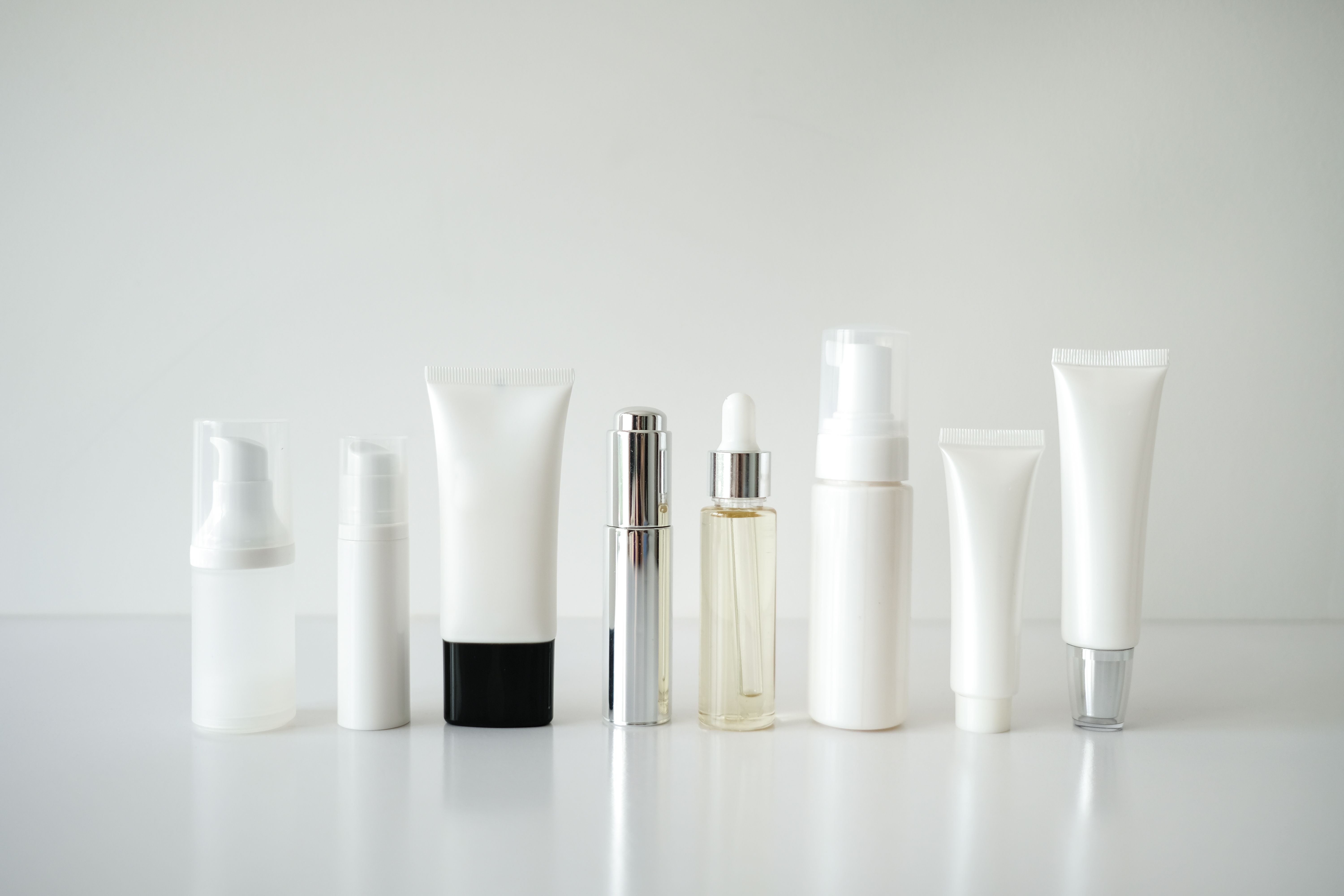High levels of the cancer-causing chemical benzene were found in various benzoyl peroxide (BPO) acne products from major brands, including Proactiv, Clinique, Clearasil, and more.1
Valisure LLC, an independent testing laboratory, filed a petition with the US Food and Drug Administration (FDA) on Tuesday, requesting a recall of treatments affected by elevated levels of the carcinogen in order to allow regulators to investigate.2
Valisure tested 66 BPO products, including creams, lotions, gels, and washes that are available over the counter from main retailers or in prescription form. Currently, FDA guidelines allow up to 2 parts per million of benzene, and Valisure found acne products that contain up to 12 times the allowed amount. Additionally, the parts per million of benzene significantly increased when the acne products were tested at higher temperatures that were designed to replicate how the products can break down over time.
Affected Products
- Proactiv 2.5% BPO cream
- Up & Up 2.5% BPO cream
- Walgreens 10% BPO bar
- Harris 10% BPO wash
- Clinique 2.5% BPO cream
- Clearasil 10% BPO cream
- La Roche-Posay 5.5% BPO cream
- PanOxyl 10% BPO cream
- Sandra Lee MD 2.5% BPO lotion
- Oxy 10% BPO cream
- Galderma 5% BPO cream
- Equate 10% BPO cream
- Differin 5% BPO cream
- CeraVe 4% BPO cream
- Sandoz 5% BPO gel
- TARO 2.5% BPO gel
- Neutrogena 10% BPO gel
- and more3
From its testing, Valisure found that Proactiv's 2.5% BPO cream, manufactured by Taro Pharmaceuticals, contained 1761 parts per million of benzene. Target's Up & Up 2.5% BPO cream had 1598 parts per million; Estee Lauder's Clinique 2.5% BPO cream had 401 parts per million; Reckitt Benckiser Group's Clearasil 10% BPO cream had 308 parts per million, and Walgreens 10% BPO cream had 114 parts per million, as some of the products with the highest parts per million.1
From the Citizen's Petition sent to the FDA, Valisure also found detectable levels of benzene in La Roche-Posay's BPO cream, PanOxyl BPO cream, Sandra Lee MD BPO lotion, Oxy's BPO cream, Galderma's BPO cream, Equate's BPO cream, and many more.3
As acne is one of the most common skin conditions in the US, especially among teenagers and young adults, it will be crucial for dermatologists to discuss the recent findings with their patients.
"Dermatologists are waking up this morning to shocking news that the widely-used over the counter and prescription medicine benzoyl peroxide decomposes into the well-known carcinogen benzene. Benzene contamination has plagued numerous skin care products recently, but this time it is different," Christopher Bunick, MD, PhD, associate professor of dermatology and physician-scientist at the Yale University School of Medicine, exclusively told Dermatology Times. Bunick, Dermatology Times' Editor in Chief, has been closely involved in benzene contamination research and education.
"Here, it is not contamination, rather benzoyl peroxide breaks down into benzene, stimulated to do so by the formulation of the products themselves. What is concerning is that nearly all benzoyl peroxide-containing products tested formed benzene (even the new triple combination topical), often at levels 2 to 1000X higher than the emergency/conditional FDA limit of 2 ppm," he said. "To make matters worse, benzoyl peroxide breakdown into benzene was accelerated by exposure to elevated temperatures equivalent to a hot bathroom or car, meaning that patients and consumers must be mindful of how to store their benzoyl peroxide-containing product (not in a car!). Even more concerning, as benzoyl peroxide breaks down into benzene, the gaseous form of benzene was found to penetrate through sealed packaging at levels nearly 1000X higher than EPA lifetime exposure limit (0.4 ppb) for the increased risk of 1 cancer per 100,000 people. Thus, benzoyl peroxide-containing acne products unsuspectedly are also an inhalation risk."
Giving perspective for dermatologists and patients, Bunick added, "I point out that benzene is equivalent to asbestos, lead, and formaldehyde as a Group 1 carcinogen; nobody wants to be around the first 2 and the latter is about to be banned by the FDA next month! This breaking news ahead of the AAD 2024 will have profound ramifications on clinical practice and how we communicate to our patients about acne topicals, but it is clear that the carcinogen benzene has no place in everyday consumer over the counter or prescription products. Now, we know this includes BPO-containing products."
Bunick will be addressing the topic of BPO and benzene in a lecture at the American Academy of Dermatology Annual Meeting this week in San Diego, California, as part of an acne and rosacea session on Monday, March 11 at 10:40 AM PST.
In a media statement4 in response to the benzene news, Bunick wrote, "I want to reiterate first and foremost that there is not a safe level of benzene that can exist in any skin care product, over the counter or prescription. Benzene is highly carcinogenic, and recently we've seen the US Food and Drug Administration (FDA) agree with this position by taking action to ensure removal of carbomers contaminated with benzene from manufacturing processes."
He added, "Benzoyl peroxide (BPO) containing products are widely used topically for acne vulgaris, folliculitis, hidradenitis suppurativa, and to a lesser extent for rosacea. Most stand-alone BPO formulations used today are obtained over the counter, while BPO-containing prescription products generally combine BPO with another active medicine, such as a retinoid or antibiotic."
In recent years, benzene has been detected in various consumer-facing products, including sunscreens,5 over-the-counter antifungal products,6 antiperspirants,7 and aerosol dry shampoo.8
“The benzene we found in sunscreens and other consumer products were impurities that came from contaminated ingredients; however, the benzene in benzoyl peroxide products is coming from the benzoyl peroxide itself,” said David Light, president of Valisure, in the news announcement.1
Valisure's testing also looked at benzene in the air surrounding acne treatments and found that even an unopened Proactiv product leaked high levels of benzene when kept at 104 degrees Fahrenheit, which is the temperature of a hot shower, for approximately 17 hours.
Delayed cancer risk is a real concern, according to Bunick. In a recent publication coming out of the United Kingdom, researchers linked low-level chronic benzene exposure to an increase in mortality. Exposure was low, as few as less than 1 ppm.8
"Millions of patients use over the counter or prescription acne products with benzoyl peroxide," Bunick said. "Dermatologists will need to have serious discussions with their patients about the long-term safety risks of using these products having benzene."
References
- Edney A. Chemical linked to cancer found in acne creams including Proactiv, Clearasil. Bloomberg. March 6, 2024. Accessed March 6, 2024. https://www.bloomberg.com/news/articles/2024-03-06/cancer-causing-chemical-found-in-acne-creams-including-proactiv-clearasil
- Valisure detects benzene in benzoyl peroxide. News release. Valisure. March 6, 2024. Accessed March 6, 2024. https://www.valisure.com/valisure-newsroom/valisure-detects-benzene-in-benzoyl-peroxide
- Valisure citizen petition on benzene in benzoyl peroxide drug products. Valisure. March 5, 2024. Accessed March 6, 2024. https://assets-global.website-files.com/6215052733f8bb8fea016220/65e8560962ed23f744902a7b_Valisure%20Citizen%20Petition%20on%20Benzene%20in%20Benzoyl%20Peroxide%20Drug%20Products.pdf
- Bunick C. Carcinogen benzene in acne products containing benzoyl peroxide. Media statement. March 5, 2024. Accessed March 6, 2024.
- Valisure detects benzene in sunscreen. Valisure. Published May 20, 2021. Accessed March 6, 2024. https://www.valisure.com/blog/valisure-news/valisure-detects-benzene-in-sunscreen/
- Bayer issues voluntary recall of specific Lotrimin and Tinactin spray products due to the presence of benzene. U.S. Food and Drug Administration. Press release. Published October 1, 2021. Accessed October March 6, 2024. https://www.fda.gov/safety/recalls-market-withdrawals-safety-alerts/bayer-issues-voluntary-recall-specific-lotriminr-and-tinactinr-spray-products-due-presence-benzene
- P&G issues voluntary recall of specific old spice and secret aerosol spray antiperspirants and old spice below deck aerosol spray products due to detection of benzene. U.S. Food and Drug Administration. Press release. Published November 24, 2021. Accessed March 6, 2024. https://www.fda.gov/safety/recalls-market-withdrawals-safety-alerts/pg-issues-voluntary-recall-specific-old-spice-and-secret-aerosol-spray-antiperspirants-and-old-spice
- Affairs O of R. Unilever issues voluntary U.S. Recall of select dry shampoos due to potential presence of benzene. U.S. Food and Drug Administration. https://www.fda.gov/safety/recalls-market-withdrawals-safety-alerts/unilever-issues-voluntary-us-recall-select-dry-shampoos-due-potential-presence-benzene
- Villeneuve PJ. Long Term Exposure to Ambient Benzene and Mortality. Am J Respir Crit Care Med. 2024 Feb 1. Accessed March 6, 2024. doi: 10.1164/rccm.202401-0005ED. Epub ahead of print. PMID: 38301235.














